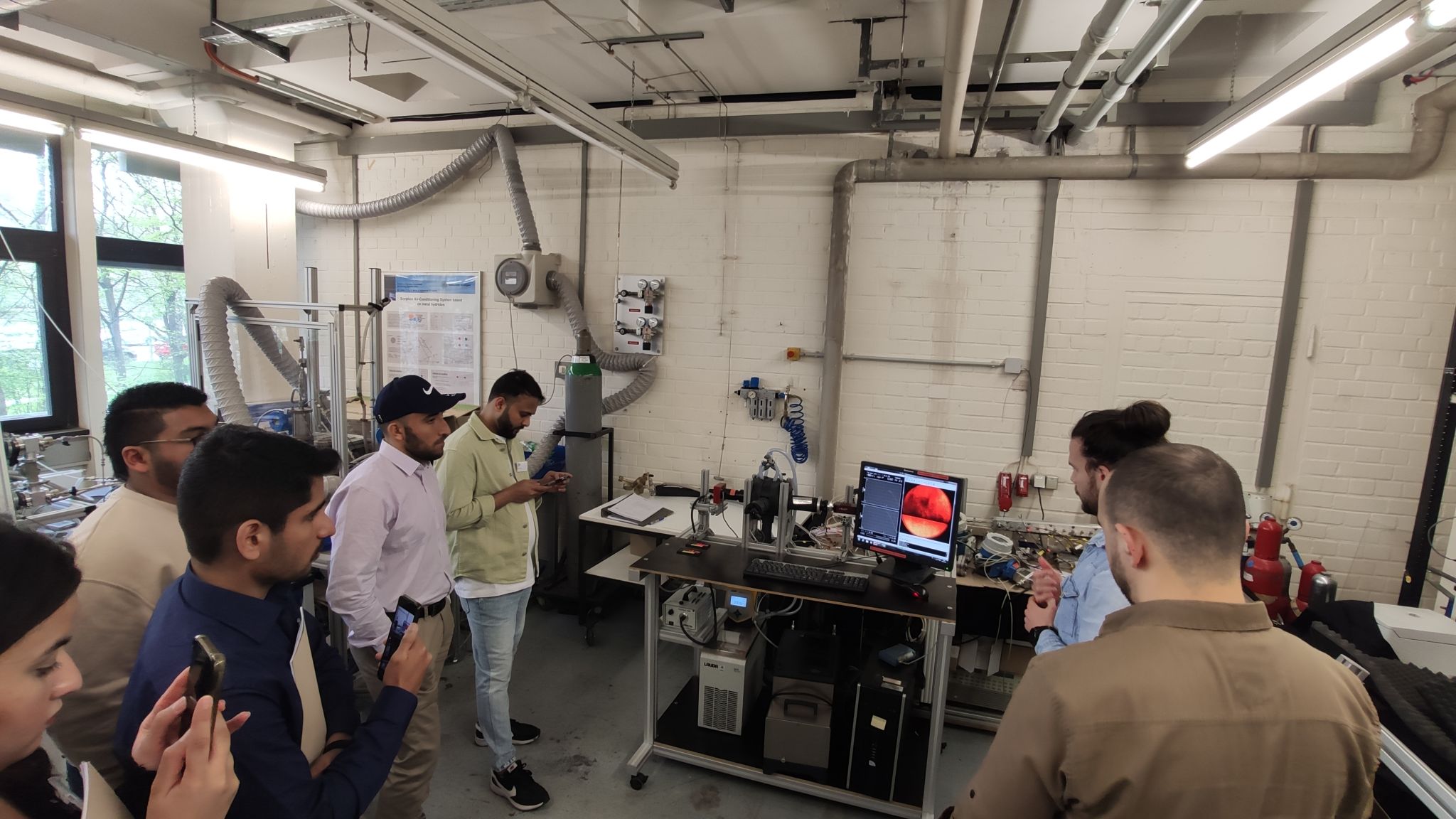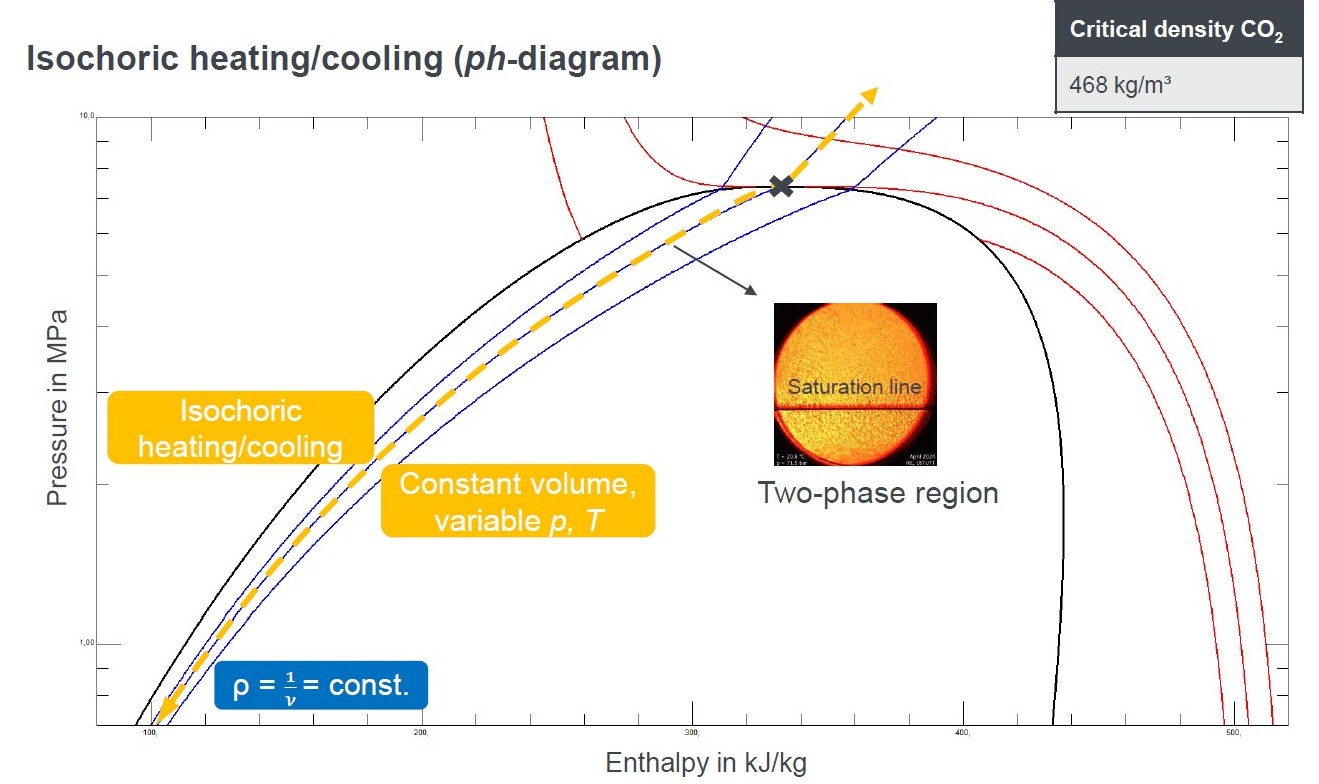The recent three-day workshop, "Developing Technologies Through R&D: IPR Management, Innovation, Entrepreneurship, Funding" held at…

CO2 viewing cell
During the Winter School held at the University of Stuttgart in April, the ISOP doctoral candidates and supervisors had the opportunity to see phase change of CO2 from subcritical to supercritical conditions. The video presented below, kindly provided by Markus Hofer and filmed at the laboratory of the Institut für Kernenergetik und Energiesysteme (University of Stuttgart), shows the isochoric cooldown of CO2 from supercritical conditions to subcritical two-phase conditions. This cooldown sequence is cut-out from a 30 minute-long experiment, so start and end points of the video do not represent a steady state.
The average temperature gradient in the cut-out sequence is -0.19 K/min, and the actual temperature and pressure within the cell can be tracked in the lower left corner of the video.
Close to the critical point (around 31ºC), a phenomenon called «critical opalescence» can be observed. This is caused by the large density fluctuations in the critical region (observable as different color shades in the video) and leads to a scattering of light so large that the substance appears milky white in reflected light while brownish dark in transmitted light. More info about this topic can be found in this article: https://link.springer.com/article/10.1007/BF02837904
We would like to thank again Dr Markus Hofer and our colleagues from University of Stuttgart for this captivating contribution.
Isochoric cooldown of CO2 from supercritical conditions to subcritical two-phase conditions.
 p-h diagram with isochoric heating/cooling of CO2.
p-h diagram with isochoric heating/cooling of CO2.

Doctoral students observing the CO2 viewing cell at Institut für Kernenergetik und Energiesysteme.




Esta entrada tiene 0 comentarios